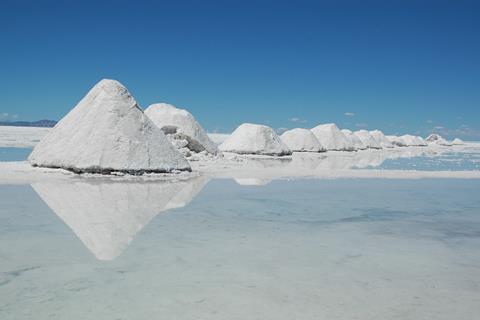Scientists have carried out the first global evaluation of the prokaryotic diversity of the biggest saline lake on Earth, Salar de Uyuni in Bolivia, which doubled as the salt planet in Star Wars: The Last Jedi.
The study is outlined in the paper ‘Subsurface and surface halophile communities of the chaotropic Salar de Uyuni’ which has been accepted for publication in Environmental Microbiology, an Applied Microbiology International publication.

Salar de Uyuni is the world’s largest salt flat, or playa, at over 10,000 square kilometres (3,900 sq mi) in area and lies in the Daniel Campos Province in Potosí in southwest Bolivia, near the crest of the Andes at an elevation of 3,656 m (11,995 ft) above sea level.
More recently, the lake became renowned as a Star Wars filming location, doubling up as the salt planet Crait where the remaining Resistance fighters took a last stand against the advancing First Order.
Formed from several prehistoric lakes that existed around 40,000 years ago that have all but evaporated over time, the region is now covered by a few metres of salt crust, which serves as a source of salt and covers a pool of brine, which is exceptionally rich in lithium.
The Salar de Uyuni holds the biggest known soluble lithium reserves in the world and work is due to start soon on extracting this resource on a massive scale.
Corresponding author Professor Ricardo Amils of Virology and Microbiology Department at the Centro de Biología Molecular Severo Ochoa, an expert in the microbial ecology of extreme environments, says the first global evaluation of prokaryotic diversity of Salar de Uyuni examined 48 sampling sites.
“Due to the high concentration of lithium and magnesium in Salar de Uyuni, it is considered a good model to study the effect of chaotropic agents - macromolecular disruptors - in the biodiversity of the lake,” he says.
“We could demonstrate, backing up previous observations from our group using much less sampling, that, as suggested, chaotropicity has an important effect in the prokaryotic diversity of the environment.”
The team sampled all the way along the salt lake during the cold, dry austral winter and the hot, rainy summer, assessed its biodiversity using massive sequencing and evaluated its correlation with different environmental variables, including temperature, lithium and magnesium concentrations and type of samples.
“We were also able to obtain samples from the deep subsurface - up to 80 metres below the surface - and compare the variable diversity along the column reporting the evolution of the Salar de Uyuni with the surface samples,” Professor Amils says.
“There is a lot of information on thalasohaline lakes - those derived from ocean water evaporation - while there is much less information from athalasohaline lakes, like Salar de Uyuni, which have a very different ionic composition, usually related to the geology of the area.
“This type of research is of astrobiological interest due to the reported presence of salts in Mars and other planetary bodies.
“These results have been obtained right before a massive evaporation of the lake brines to recover lithium salts, so it can be considered a baseline before mining.
“It will be interesting to compare it with the biodiversity obtained a few years after massive lithium extraction. Also it will be interesting to perform more drillings along the lake to evaluate its historical biodiversity record.”
The study was supported by a grant from the Bolivian Ministry of Mines to establish the baseline before the massive extraction of lithium.
‘Subsurface and surface halophile communities of the chaotropic Salar de Uyuni’ is published in Environmental Microbiology.







No comments yet